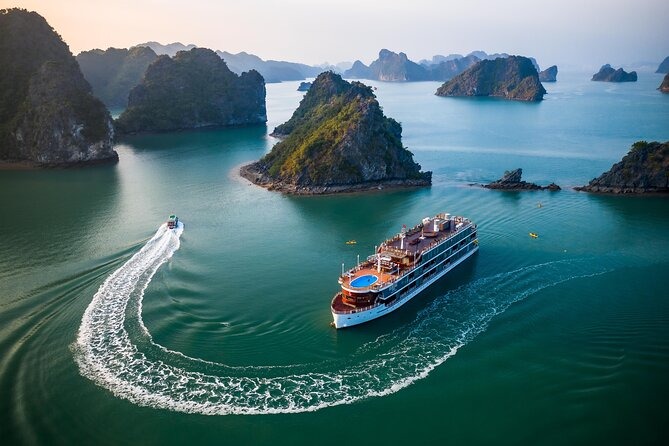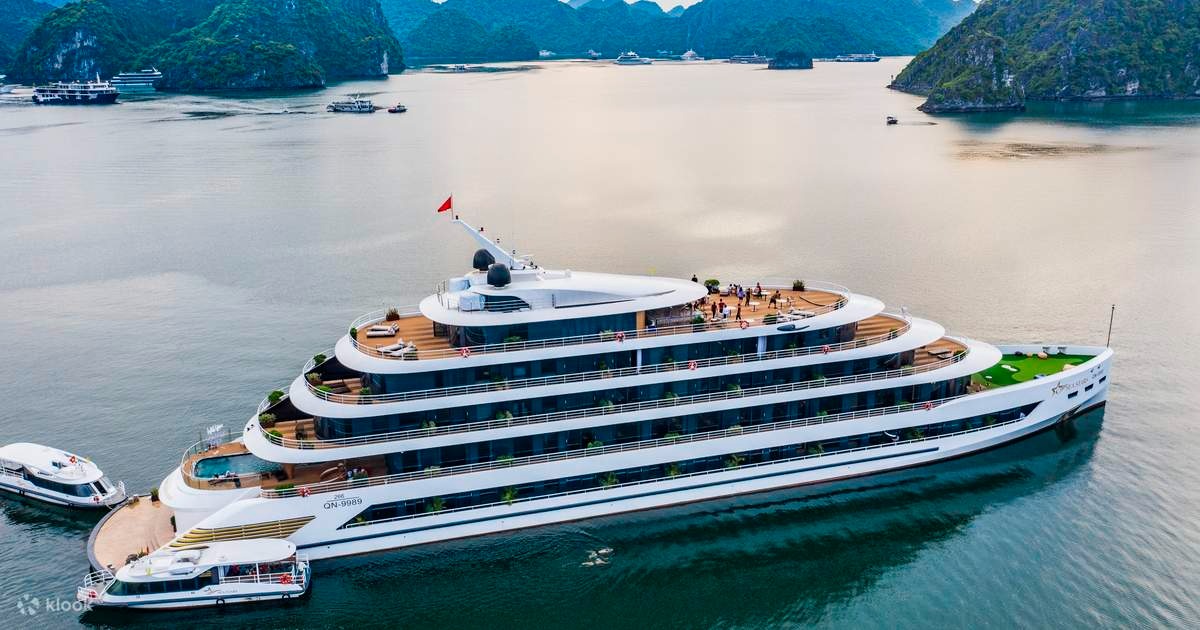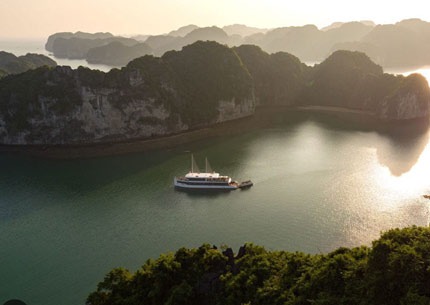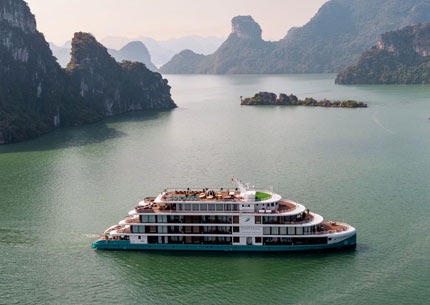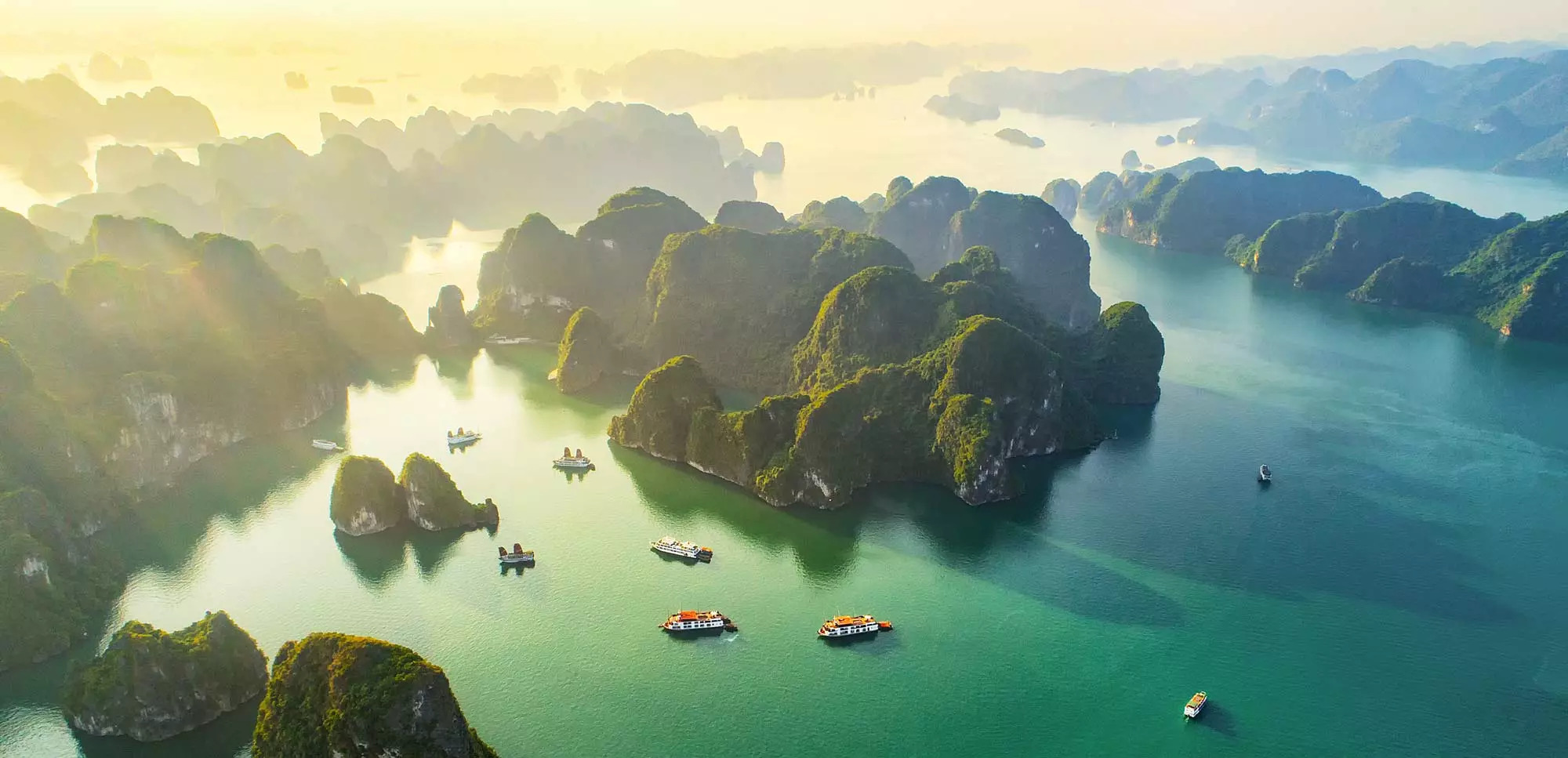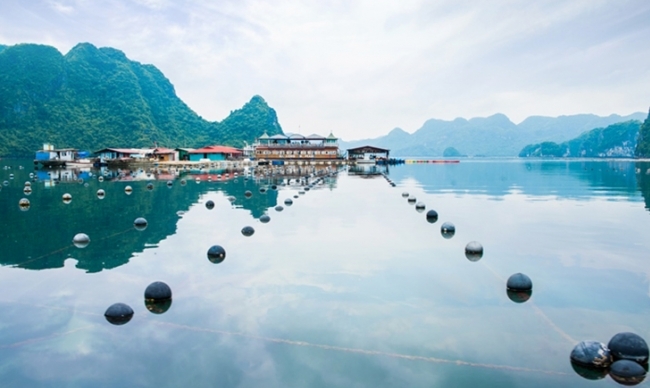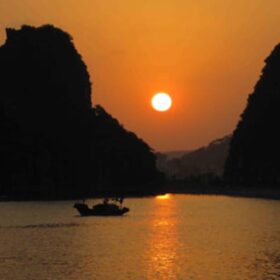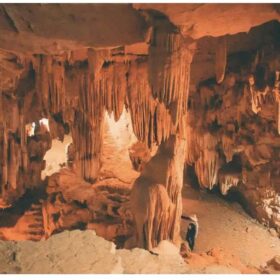Halong Bay Pearl: 25 Extraordinary Facts About Vietnam’s Premier Pearl Farms in 2026-2027
Dive into the mesmerizing world of Halong Bay pearls and discover the perfect blend of nature’s artistry and human craftsmanship in Vietnam’s most spectacular seascape.
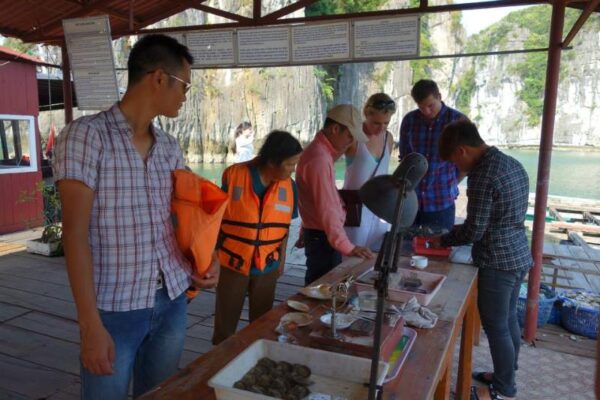
The Fascinating World of Halong Bay Pearls: Nature’s Perfect Gems
Nestled among the 1,969 limestone karsts of Vietnam’s most iconic seascape, Halong Bay’s pearl farms represent an extraordinary marriage of natural beauty and human ingenuity. These farms aren’t merely commercial ventures; they’re living museums where ancient traditions meet modern cultivation techniques, producing some of Asia’s most coveted marine treasures.
In 2025, Halong Bay’s pearl industry has evolved into a sophisticated operation that balances economic value with ecological responsibility. The distinct combination of mineral-rich waters, optimal temperature fluctuations (20-29°C throughout the year), and protected bays creates an environment where pearls develop exceptional luster and quality that’s recognized worldwide.
As you sail through the emerald waters on a luxury 2-day cruise experience, visiting these pearl farms offers a glimpse into a world where patience transforms simple mollusks into objects of extraordinary beauty and value.
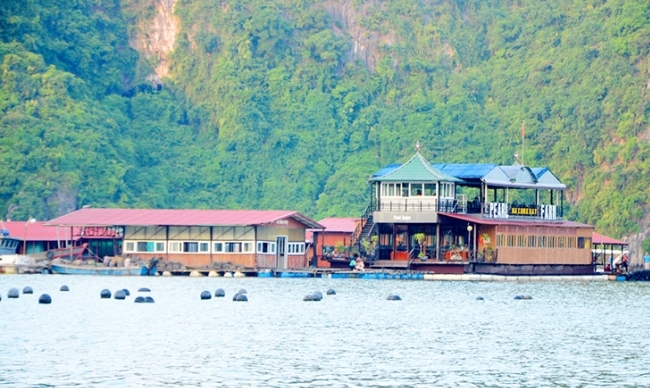
The Science Behind Halong Bay’s Pearl Quality
Ideal Environmental Conditions
What makes Halong Bay pearls stand out in the global market is their exceptional growing environment. The UNESCO World Heritage site provides a natural laboratory where several factors converge perfectly:
- Water Chemistry: The bay’s limestone-filtered waters maintain a pH balance between 7.8-8.2, ideal for nacre formation
- Nutrient-Rich Currents: Seasonal upwellings bring plankton-rich waters, providing essential nutrition for pearl-producing oysters
- Natural Protection: The 1,969 islands and islets create sheltered areas with reduced wave action, allowing oysters to develop pearls without stress or disruption
- Temperature Gradient: The seasonal variation between 20°C in winter and 29°C in summer creates ideal nacre deposition patterns
Marine biologists monitoring the bay’s ecosystem in 2025 have documented how these factors combine to produce pearls with up to 0.42mm thicker nacre layers than comparable varieties from other regions.
Pearl Varieties in Halong Bay
The waters of Halong Bay host several oyster species capable of producing various pearl types:
- Akoya Pearls: The region’s flagship product, typically 6-8mm in diameter with exceptional luster
- South Sea Pearls: Larger varieties (10-14mm) cultivated in deeper waters
- Mabe Pearls: Distinctive half-spheres grown against the shell wall, popular in statement jewelry pieces
The 2025 annual production report from Vietnam’s Aquaculture Department indicates that Halong Bay produces approximately 3.2 tons of premium-grade pearls annually, with Akoya varieties accounting for 68% of total production.
The Remarkable History of Pearl Cultivation in Halong Bay
Ancient Beginnings and Modern Renaissance
Pearl collection in Halong Bay dates back centuries, but modern cultured pearl farming only began in earnest during the 1990s. The evolution of this industry tells a fascinating story:
- Pre-Colonial Period (Before 1887): Local fishermen occasionally found natural pearls while diving for food
- French Colonial Influence (1887-1954): Introduction of systematic pearl hunting techniques
- Post-War Recovery (1975-1990): Rebuilding of marine industries after conflict
- Modern Cultivation (1990-Present): Introduction of Japanese techniques revolutionizing pearl farming
By 2025, what began as small experimental farms has blossomed into a sophisticated industry employing over 2,800 local residents and generating approximately $18.5 million in annual export revenue.
Cultural Significance Through Centuries
Pearls have held deep cultural significance in Vietnamese society, appearing in:
- Royal Insignia: Historical documents from the Nguyen Dynasty (1802-1945) reference Halong pearls adorning royal crowns
- Traditional Medicine: Ancient texts suggest powdered pearl was used in remedies for skin conditions and longevity
- Ceremonial Objects: Pearl-inlaid artifacts featured prominently in important rituals and ceremonies
Today, this cultural heritage informs modern pearl jewelry design, with many artisans in Halong creating pieces that reflect traditional Vietnamese aesthetics while appealing to contemporary tastes.
Inside the Pearl Cultivation Process: From Oyster to Jewel
Meticulous Selection and Implantation
The journey of a Halong Bay pearl begins with precision and care:
- Oyster Selection: Technicians select only the healthiest specimens from breeding tanks, typically Pinctada fucata (Akoya) oysters that have reached 2-3 years of maturity and demonstrate shell sizes of 10-12cm
- Nucleation: In climate-controlled laboratories, skilled technicians perform delicate surgery, implanting a nucleus (typically a 5-7mm Mississippi River mussel shell bead) along with a 2mm² piece of donor mantle tissue
- Recovery: Implanted oysters spend 2-3 weeks in shallow recovery bays where water temperatures are maintained at exactly 24°C to minimize rejection rates
The most skilled technicians can complete up to 300 implantations daily with success rates exceeding 85% – a 12% improvement over industry averages worldwide.
Nurturing Period and Growth Monitoring
Once implanted, oysters enter a carefully monitored growing phase:
- Suspension Systems: Oysters are housed in specialized net panels suspended 4-10 meters below the surface in designated farming zones
- Rotation Program: Every 60 days, oysters are moved between depths to optimize exposure to different nutrient profiles
- Health Monitoring: Marine biologists conduct bi-weekly inspections using underwater drones equipped with AI imaging technology to detect early signs of disease or parasites
- Water Quality Management: 24/7 sensor arrays monitor 16 different water quality parameters, alerting farm managers to any environmental changes
The 2025 cultivation protocol includes a proprietary feeding program developed by Vietnamese and Japanese marine scientists that has reduced pearl formation time by 9% while improving quality metrics.
Harvesting and Grading Excellence
After 18-24 months of careful nurturing, the harvesting process begins:
- Extraction: Skilled technicians gently open each oyster and extract pearls by hand
- Initial Cleaning: Pearls undergo a 7-stage cleaning process using only natural materials
- Grading: Expert gemologists evaluate each pearl on a 100-point scale considering:
- Luster (40 points)
- Surface quality (25 points)
- Shape (20 points)
- Color (10 points)
- Size (5 points)
- Sorting and Matching: For jewelry production, pearls are meticulously matched for consistency
Only about 5-8% of harvested pearls receive the coveted AAA grade, representing the pinnacle of Halong Bay pearl quality.
Top 5 Pearl Farms to Visit in Halong Bay in 2026
1. Tung Sau Pearl Village
Located in a sheltered cove near Sung Sot Cave, Tung Sau has transformed from a simple farm into a comprehensive pearl experience center:
- Location: Central Halong Bay, 20.8 km from Tuan Chau Harbor
- Area: 13-hectare floating complex with 24 demonstration platforms
- Highlight: Vietnam’s only open workshop where visitors can witness the entire cultivation process, including live implantation demonstrations
- Visitor Experience: Personal pearl extraction experience where guests can open an oyster and keep the pearl they find (additional fee of 850,000 VND)
- Accessibility: Featured on most 3-day luxury cruise itineraries departing from Hanoi
The newly opened Tung Sau Pearl Museum displays artifacts dating back to the 15th century, documenting Vietnam’s long history with these precious gems.
2. Vung Dang Pearl Farm
Embracing cutting-edge technology while honoring traditional methods:
- Location: Northeastern Halong Bay, near Cong Do area
- Established: 1995, making it one of the oldest continuous operations
- Special Feature: Japan-Vietnam collaboration zone showcasing side-by-side traditional Vietnamese and Japanese cultivation techniques
- Unique Offering: Microscope stations where visitors can examine pearl formation at cellular levels
- Best For: Photography enthusiasts (dedicated photo platforms with perfect angles of karst formations)
The farm’s conservation program has successfully reintroduced 12 native oyster species, contributing significantly to local marine biodiversity.
3. Ho Dong Tien Pearl Center
A boutique operation focusing on premium-quality production:
- Location: Southwestern Halong Bay, adjacent to Dong Tien Lake
- Size: Intimate 4-hectare facility producing limited quantities (approximately 15,000 pearls annually)
- Specialty: Rare golden-hued pearls achieved through specialized cultivation techniques
- Visitor Experience: Hands-on jewelry design workshop where guests create personalized pieces with guidance from master craftspeople
- Pricing: Premium experience with higher-end pearl selections (average necklace prices ranging from $800-2,500)
Their signature “Moonlight Collection” features pearls harvested exclusively during full moon cycles, which local artisans believe enhances their luminosity.
4. Lan Ha Bay Pearl Village
Though technically in adjacent Lan Ha Bay, this farm is accessible through combined Halong-Lan Ha Bay tours:
- Location: Northern Lan Ha Bay, Cat Ba Archipelago
- Unique Aspect: Specializes in both freshwater and saltwater pearl cultivation
- Visitor Highlights: Side-by-side comparison demonstrations of different pearl types
- Environmental Innovation: Pioneering Vietnam’s first zero-waste pearl farming system with 100% oyster shell recycling
- Culinary Experience: On-site restaurant serving dishes incorporating oyster meat from post-harvest processing
Their conservation initiative has created a 50-hectare protected marine zone around the farm, resulting in a documented 35% increase in local fish species diversity since 2020.
5. Hon Thoi Pearl Cooperative
Combining community-based tourism with traditional pearl farming:
- Location: Eastern Halong Bay, near Cua Van floating village
- Organization: Cooperative owned by 78 local fishing families
- Educational Focus: In-depth explanations of traditional pearl hunting techniques alongside modern cultivation
- Cultural Immersion: Demonstrations of how pearl cultivation integrated with traditional Vietnamese fishing life
- Community Impact: 65% of proceeds directly support local village infrastructure and education
Visitors can participate in the cooperative’s “Pearl Guardian” program, contributing to oyster bed restoration projects in areas once depleted by over-harvesting.
Distinguishing Authentic Halong Bay Pearls: Expert Tips for 2026
Quality Markers of Genuine Halong Bay Pearls
When shopping for authentic Halong Bay pearls, look for these distinguishing characteristics:
- Nacre Thickness: Genuine Halong Bay Akoya pearls typically have nacre layers measuring 0.5-0.8mm thick, giving them exceptional durability
- Luster Qualities: The reflection should be sharp and distinct, not diffuse or cloudy
- Color Range: Authentic pearls display subtle color gradations rather than perfectly uniform coloration
- Weight Test: Real pearls feel cool to the touch initially and warm up slowly
- Tooth Test (discreet): When gently rubbed against the edge of your tooth, genuine pearls feel slightly gritty, not smooth like imitations
The latest authentication technology in 2025 includes portable spectrometers that vendors can use to verify pearl composition on the spot.
Certification Systems and Guarantees
Reputable dealers in Halong Bay now offer comprehensive documentation:
- Halong Bay Pearl Association Certificate: Includes spectroscopic analysis results, nacre thickness measurements, and grade classification
- Origin Traceability: QR code linking to the specific farm and harvest date
- Digital Passport: Blockchain-secured verification accessible through a smartphone app
- Aftercare Guarantee: Most quality retailers offer lifetime cleaning and restringing services
When purchasing, ensure you receive the certificate with the HBPA hologram seal and verification number that can be checked against the official database.
Best Seasons to Experience Pearl Farming in Halong Bay
October-December: Harvest Season Magic
The autumn months represent the prime period for pearl farm visits:
- Weather Conditions: Average temperatures of 22-26°C with humidity levels of 60-70%, providing comfortable conditions for farm exploration
- Water Clarity: Exceptional visibility (up to 8 meters) after the summer rains have subsided
- Harvesting Activity: Many farms schedule their major harvests during this period, allowing visitors to witness the excitement of pearl extraction
- Special Events: The Halong Pearl Festival in November features competitions among farm technicians and special tours
During this peak season, it’s advisable to book a comprehensive 3-day itinerary that allows sufficient time to explore multiple pearl farms.
January-March: Implantation Insights
Winter months offer a different but equally fascinating perspective:
- Technical Operations: Focus shifts to oyster preparation and nucleus implantation
- Demonstration Schedule: Farms conduct more frequent technical demonstrations during this quieter tourist season
- Workshop Availability: Greater access to hands-on experiences with less crowding
- Pricing Advantage: Many farms offer winter discounts of 15-25% on pearl products
The cooler temperatures (averaging 15-20°C) mean you’ll need light layers, but you’ll benefit from more personalized attention from farm staff.
April-May: Pearl Growth Phase
The spring transition brings unique opportunities:
- Biological Insight: Special microscopy demonstrations showing active nacre deposition
- Photography Conditions: Ideal lighting with clear skies and vibrant colors
- New Collection Launches: Many farms debut their annual designs during this period
- Exclusive Access: Some farms open restricted cultivation areas only during these months
This shoulder season balances comfortable weather (22-28°C) with moderate visitor numbers, creating an ideal environment for learning.
Insider Shopping Guide: Finding Value in Halong Bay Pearls
Price Comparison: Farm vs. Retail
Direct farm purchases offer significant advantages:
| Pearl Type | Average Farm Price (2025) | Typical Retail Price | Potential Savings
|
|---|---|---|---|
| AAA Akoya Strand (7-7.5mm) | $850-1,200 | $1,400-1,900 | 35-40% |
| Pearl Stud Earrings (8mm) | $120-180 | $220-300 | 40-45% |
| South Sea Pendant (12mm) | $280-350 | $500-650 | 40-45% |
Most farms offer tax-free shopping for international visitors, providing additional savings of approximately 10% on listed prices.
Negotiation Ethics and Expectations
Understanding the local business culture helps secure fair deals:
- Acceptable Negotiation Range: 10-15% reduction from initial prices is considered reasonable
- Volume Discounts: Purchasing multiple items typically unlocks graduated discounts starting at 5% for two items and up to 20% for five or more
- Seasonal Factors: End-of-season (late December and late May) often brings special clearance pricing
- Package Deals: Many farms offer “complete sets” (necklace, earrings, bracelet) at 25-30% less than individual pricing
Respectful negotiation is appreciated, but aggressive bargaining can be considered disrespectful given the craftsmanship involved.
Authentication and After-Purchase Care
Protecting your investment requires attention to detail:
- Cleaning Protocol: Use only a soft cloth moistened with distilled water; never use ultrasonic cleaners or harsh chemicals
- Storage Requirements: Keep pearls in soft pouches separate from other jewelry to prevent scratching
- Wearing Recommendations: Apply perfume, hairspray and other cosmetics before wearing pearls
- Restringing Schedule: Professional restringing every 12-18 months for regularly worn pieces
Most reputable vendors include a care kit with purchase, containing specialized cleaning materials and storage pouches.
Sustainability Innovations in Halong Bay Pearl Farming for 2026
Eco-Certification and Marine Protection
Halong Bay’s pearl industry has embraced comprehensive sustainability practices:
- UNESCO-Aligned Standards: All farms now operate under the Sustainable Pearl Farming Protocol co-developed with UNESCO’s marine conservation experts
- Carbon Neutrality: 78% of farms have achieved carbon-neutral status through solar power integration and methane capture from organic waste
- Water Filtration Systems: Advanced biofiltering techniques allow farms to actually improve water quality in their vicinity
- Marine Protected Areas: Each farm maintains a minimum 20-hectare no-fishing zone, creating marine life sanctuaries
Independent monitoring by the International Aquaculture Certification Council shows a 45% increase in marine biodiversity within farm vicinities since 2020.
Community Integration and Social Responsibility
Modern pearl farms have become centers for positive social impact:
- Local Employment: Over 2,800 residents now work in the industry, with average wages 32% higher than regional alternatives
- Educational Initiatives: Pearl farms sponsor 15 marine science scholarships annually for local students
- Cultural Preservation: Documentation and continuation of traditional pearl diving techniques
- Healthcare Access: Mobile health clinics funded by the Pearl Association serve remote fishing communities
The Vietnam Pearl Association reports that for every dollar generated by pearl sales, approximately $0.38 flows directly into community development initiatives.
Planning Your Perfect Pearl Farm Visit in 2026
Booking the Right Cruise Experience
Selecting the appropriate cruise itinerary ensures optimal pearl farm experiences:
- 2-Day Cruises: Include brief visits to main pearl farms, perfect for casual interest
- 3-Day Luxury Itineraries: Offer extended visits with private demonstrations and exclusive workshop access
- Combined Ninh Binh-Halong Tours: Provide cultural context by contrasting limestone landscapes with pearl cultivation
- Custom Private Charters: Can include after-hours pearl farm access and specialized jewelry design sessions
The most comprehensive experiences are generally found on luxury cruises that partner directly with top-tier farms, providing behind-the-scenes access not available to day visitors.
Photography Recommendations
Capturing the beauty of pearl farms requires some planning:
- Best Light: Early morning (7:00-9:00 AM) provides soft golden light that enhances pearl luster
- Recommended Equipment: Macro lens capability for close-up detail work
- Ideal Vantage Points: The northeastern corners of floating platforms typically offer the best background composition with karst formations
- Special Permission: Some farms allow drone photography with advance registration
Most farms now offer dedicated “Instagram spots” with perfect lighting and composition for social media-worthy photos.
Cultural Etiquette and Interaction
Understanding local customs enhances the experience:
- Greeting Protocol: A slight nod or handshake is appropriate when meeting farm staff
- Appropriate Questions: Farm technicians appreciate specific questions about their craft rather than just price inquiries
- Gift Expectations: Small gifts from your home country are appreciated if you receive special attention
- Tipping Practices: Not expected but appreciated for exceptional personalized service (50,000-100,000 VND)
Many technicians have fascinating personal stories about their journey into pearl cultivation—expressing genuine interest often leads to deeper insights than standard tours provide.
Conclusion: The Enduring Allure of Halong Bay’s Living Gems
Halong Bay pearls represent far more than luxury items—they embody the harmonious relationship between Vietnam’s natural splendor and human artistry. As you cruise through the emerald waters aboard your 5-star luxury vessel, the pearl farms you’ll encounter tell a story of cultural continuity, environmental stewardship, and artistic excellence.
In 2025, these floating workshops have evolved into living museums where ancient traditions meet cutting-edge sustainability practices. Whether you’re seeking the perfect keepsake, a deeper understanding of marine cultivation, or simply a fascinating glimpse into a unique way of life, Halong Bay’s pearl farms offer an experience that resonates long after you’ve returned home.
Like the pearls themselves—formed layer by patient layer over time—the memories of your visit to these remarkable places will become treasured keepsakes, reflecting the true magic of Vietnam’s most iconic seascape.
Frequently Asked Questions About Halong Bay Pearls
Q: How can I tell if Halong Bay pearls are real?
A: Authentic Halong Bay pearls come with certification including spectroscopic analysis results. They also feel cool to the touch initially, have slight surface imperfections when examined closely, and feel slightly gritty (not smooth) when gently rubbed against your teeth.
Q: What makes Halong Bay pearls different from other pearls?
A: The unique mineral composition of Halong Bay’s waters creates pearls with exceptional luster and nacre thickness (0.5-0.8mm). The controlled environment of the limestone karst landscape provides ideal growing conditions that produce pearls with distinctive character.
Q: Are pearl farm visits included in all Halong Bay cruises?
A: Not all cruises include pearl farm visits. Premium operators like Halong Bay Lux Cruises typically include these experiences in their itineraries, with longer cruises offering more in-depth visits.
Q: What’s the price range for quality Halong Bay pearls in 2025?
A: A quality 7-7.5mm Akoya pearl necklace directly from farms ranges from $850-1,200, while individual pearls for custom jewelry start around $30-60 each depending on grade. South Sea varieties command premium prices starting at $280 for a single pearl pendant.
Q: What’s the best season to visit pearl farms in Halong Bay?
A: October to December offers the optimal combination of harvest activities, comfortable weather (22-26°C), and excellent water clarity. This period coincides with the annual Halong Pearl Festival in November, offering additional special events and demonstrations.
- Website: halongbayluxcruises.com
- Hotline | WhatsApp: +84.978.358.422
- Phone | WhatsApp: +84.962.261.687
- Email: halongbayluxcruises@gmail.com or vietnammarveltravel@gmail.com
- Top TripAdvisor Halong Bay
Our team is available 24/7 to answer your questions and help plan your perfect journey to one of Vietnam’s most beautiful destinations.


